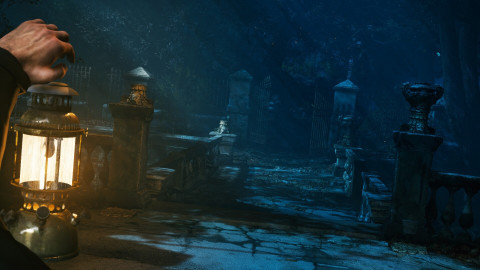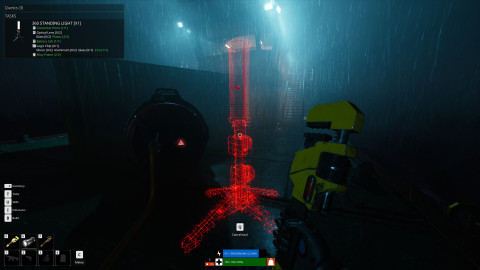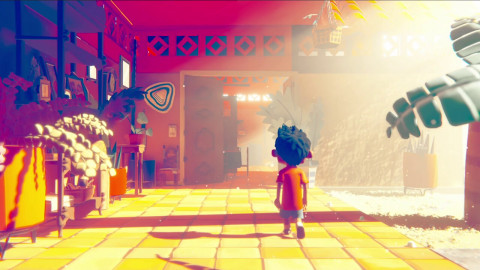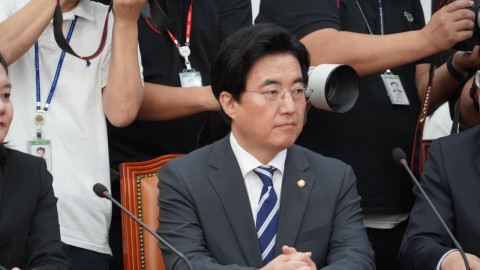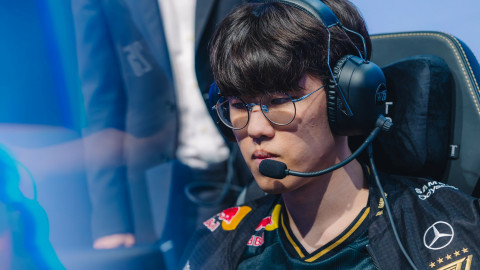
Numerous changes were imposed on Titanfall 2 since its predecessor's relatively weak showing, as the game featured an entirely redesigned Rodeo mechanics and increased variety of Titan loadouts. Such attempts were to make Titanfall 2’s combat experience richer and more dynamic than its previous title. In today’s “Solving Titan sized problems: evolving Titan combat in Titanfall 2,” Carlos Pineda explained what problems he had to deal with in designing Titan combat of Titanfall 2 as Respawn Entertainment’s game designer, and what approach he took to deepen the game's strategical aspect in combat. He explained how there are three types of differently timed decision making process, how time-to-kill affects players’ combat experience, and what changes and adjustments were made to enhance players’ perception of Titan combat.
Layers of decision making
Pineda explained that there are different levels of decision-making process each with different amounts of time spent on the judgment. Atomic decision is the simplest form of decision in which, for example, the player finds the target, aims the weapon at it, and opens fire. Atomic decision is usually made within a second, and usually revolves around the fundamental aspect of combat: to seek and destroy. Tactical decision is the type that involves deeper level of thinking, such as coming up with flank routes or planting traps in desirable locations. As we go even deeper we find ourselves making strategic decisions, which involve more thought process and thus more time. Examples include composing Titan loadouts or deciding which team composition to go with.

TTK’s effect on how the game is paced
Time-to-kill, also abbreviated as TTK, acts as an element that determines how fast or slow the game’s combat progresses. Higher TTK means it takes more time for players to kill each other, and that often results in what Pineda labeled as the bullet sponging effect. In this case, executing the enemy no longer becomes an element of excitement and thrill but rather a boring and tiresome labor in which you have to perform similar tasks over and over to finally shut down the enemy. Titan’s high HP naturally translated into high TTK in the game, and Titanfall 1’s Titan combat often ended up with two Titans simply firing weapons at each other until one went down. Pineda wanted to solve this in Titanfall 2.
He was able to come up with necessary measures to minimize the negative effect of high TTK while maintaining Titan’s HP within the game. Pineda decided to redesign Titan combat so that players could constantly think of spontaneous tactics in the otherwise boring fights where there was not as much of multifaceted thought process within the battle.
Adding tactical depth to Titan loadouts
Having reached the conclusion that hitscan weapons with large ammo had made Titanfall 1’s Titan combat too repetitive, Pineda decided to reduce available hitscan weapons and replace them with projectile weapons that require more strategic thinking in order for players to land the hits on their targets. Now players began to think further before firing their weapons, especially in the case of Scorch that only has a single-fire thermite launcher. Legion, the only Titan with classic hitscan bullet-firing weapons, received certain traits that has made it harder for him to track down and hit the enemy. He has to warm up his gun before it can fire, making it easier for the enemy to dodge his attacks by dashing to cover once they see him start up his gun.
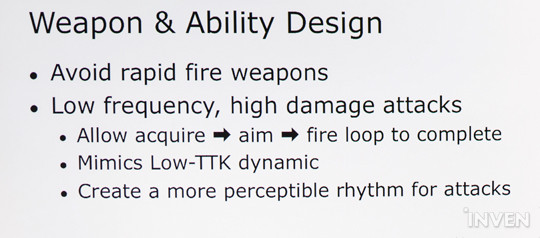
Special abilities such as trap and phase shift also added strategical depth to the combat experience, as it allowed players to chain their abilities and shots to create attack combos. Each Titan’s combat style was designed to be distinguishable from each other, freeing them from the urge to compete with similar abilities and allowing Titan warfare to be more diverse and spectacular. These changes overall made Titanfall 2 a stronger game with a lot more intriguing combat experience that came from reduced repetitiveness and enhanced strategical aspect.

Room for further improvement
Despite having made a great leap forward from Titanfall 1’s repetitive Titan combat, Pineda acknowledged that Titanfall 2’s combat system has also shown its own drawbacks that the team can improve on as they make further adjustments to the game.
Diverse titan loadout was certainly a plus, but it also resulted in a more chaotic battlefield in which players often found it challenging to keep track of everything that was going on. Titanfall 2’s combat system was designed and tested mostly in 1v1 environment, and things got hectic when multiple Titans clashed in online matches. He thought that the game did not properly represent the intended in-game experience, and that the chaotic battlefield with Titans jumping around often went so far as to distract players from their mission objectives. He also pointed out that the game could have done better in helping players learn how each Titan works.

Titanfall 2 received much positive response from critics, and did make notable progress by fixing a lot of the problems that were addressed in Titanfall 1. The successful improvement has shown that Respawn Entertainment is capable of establishing Titanfall series as a solid IP, and also that they are capable of improving the game even more as they continue to deliver exciting experience while finding ways to further enhance the game’s overall quality.
Sort by:
Comments :0


